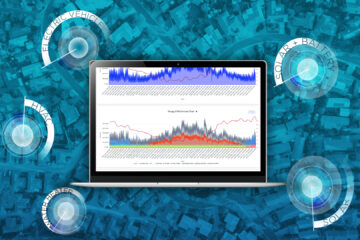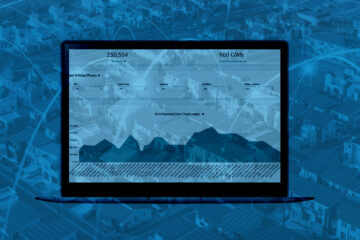Learn more about how EV equity is driving transportation electrification programs and planning at Pepco, Con Edison and other utilities by watching their on-demand sessions from the 2021 Engage Virtual conference, and download our solution briefs to learn more about Analytics Workbench and Bidgely’s EV Solution.
As energy providers pursue decarbonization goals, equity and inclusion are at the center of their strategic plans to ensure that no customer is left behind in clean energy transition. This vision extends to transportation electrification initiatives – both designing incentives and other programs to help ensure EVs are attainable for everyone as well as prioritizing the deployment of charging infrastructure in traditionally under-served communities. Though equitable outcomes are the primary drivers, ensuring universal access to EV ownership is also integral to growing and accelerating EV adoption across the board.
Data as a Proxy for Customer Voice
“We’re working diligently to increase minority participation in our electric vehicle, energy efficiency and solar programs,” says William Ellis, Regional Vice President of External Affairs at Pepco. “Our commitment to our communities is well recognized, but now we are taking it a step further. We’re actively seeking to understand, address and remove the barriers that are preventing some of our customers from participating – whether those barriers are financial, cultural, educational awareness, or even public policy. And we want to ensure that our most vulnerable customers – those who need our programs the most – are able to realize benefits that they’ve been promised so that all of our communities can thrive.”
If energy providers could, they’d have one-on-one conversations with every customer and get to know them — who they are, their values, their preferences, and how they can provide the best possible service. Of course, that’s not realistic, but in many ways, data can serve as a powerful proxy for the customer voice, helping to ensure that the clean energy future is informed, inclusive, trusted, and truly sustainable
Ellis agrees, saying that the foundation for successfully removing barriers to participation is data analytics.
“We’re taking a data-driven approach that we call ‘total marketing’ which looks at demographic, geographic and other participation data to identify the unique needs of all customers as a means to make certain that customers who have historically been underrepresented in our programs are able to take part moving forward.”
Bidgely is partnering with energy businesses worldwide to provide precisely that type of 360° consumer profile for every customer in a service territory to enable meaningful, inclusive EV and other clean energy transition program designs.
Conventional tools such as mass surveys, focus groups and manual utility population data collection take time, are static, lack granularity, don’t update consistently and fail to account for behavioral and lifestyle aspects in their models.
Bidgely instead builds a much more holistic and accurate 360° profile of every customer by analyzing raw energy consumption AMI data using sophisticated machine learning and statistical solutions to pinpoint essential attributes that describe people’s behavior, lifestyle and other characteristics. These hyper-personalized customer profiles enable more effective and engaging education and program recruitment.
Ellis says personalized messaging is essential to foster trust. “A quote I always come back to is ‘people don’t care what you know, until they know that you care.’ And that’s the same with our marketing. Our customers have to have confidence in what we say and see us as a trusted energy advisor, which stems in large part from making sure every customer is able to see themselves in the marketing that we produce.”
Data the Building Blocks of a Stronger Infrastructure Foundation
Accessible infrastructure is also an integral part of transportation electrification equity. With that in mind, Pepco is simultaneously pursuing residential and public EV infrastructure solutions.
“We first started with our residential EV program, which offers rebates to help customers install level two chargers at home to optimize home charging and make it easier for them to charge off peak – which reduces grid build out,” says Ellis. “We also have our multi-dwelling program that aims to reduce barriers for our rental population to purchase EVs and our public EV charging program to encourage overall EV adoption.”
Bidgely’s Analytics Workbench provides utilities with the EV analytics they need to inform both residential and public charging infrastructure planning and programs. This is done by locking down who, what, where and how much of electric vehicles. It’s essential to understand EV driver behaviors and when charging is occurring across the territory as a means to connect the 360° view of the grid with those of all customers to create a holistic grid + customer 360° analytic view. This comprehensive 360° perspective enables better decision-making about grid planning, real time operations, and customer programs that would be advantageous to introduce.
Like Pepco, ConEdison is pursuing a similar holistic and data informed approach to EV infrastructure planning.
“We’re doing a demonstration project with the New York City Department of Transportation and our partner Flow to bring 100 chargers to curbsides all over the five boroughs of New York City to open up new opportunities for EV drivers to park on the street and be able to charge their cars. Once the demonstration is shown to be successful, this is going to be an infrastructure game changer for New York, considering our population,” says Raghusimha Sudhakara, Con Edison’s Director of EV Demonstration Projects. “Another example, given our demographic and where our customers live, is our efforts to increase access to large charging hubs. As part of our Power Ready program, we just completed a new hub in Bed-Stuy in Brooklyn that features 25 fast chargers In a repurposed industrial building. This is phenomenal, because it’s bringing charging to underserved communities, including several New York City Housing Authority multi-family buildings and a major hospital. Plus, our data has revealed that many of our rideshare drivers live in that area. Roughly half of all rideshare rides in the city either start or end in the surrounding community, so having a facility like the EV charging hub makes a very big difference in providing options close to home where they can charge their cars. And the fact that it’s open to the public really makes a difference to the whole community around it.”
ConEdison is also implementing incentive programs to encourage installation of both residential and public chargers in underserved neighborhoods.
“If someone makes a decision to install a charger in a disadvantaged community, we give a higher level of incentive,” saysSudhakara. “ In that way, our programs are designed to drive the market in certain directions to ensure we cover the majority of our territory, and bring the benefits of transportation electrification to everyone without leaving anybody behind.”
Learn More from the Leaders
Hear more about how equity is driving transportation electrification programs and planning at Pepco, Con Edison and other utilities by watching their on-demand sessions from the 2021 Engage Virtual conference, and download our solution briefs to learn more about Analytics Workbench and Bidgely’s EV Solution.


